Chao Jin
MegaScale-MoE: Large-Scale Communication-Efficient Training of Mixture-of-Experts Models in Production
May 19, 2025Abstract:We present MegaScale-MoE, a production system tailored for the efficient training of large-scale mixture-of-experts (MoE) models. MoE emerges as a promising architecture to scale large language models (LLMs) to unprecedented sizes, thereby enhancing model performance. However, existing MoE training systems experience a degradation in training efficiency, exacerbated by the escalating scale of MoE models and the continuous evolution of hardware. Recognizing the pivotal role of efficient communication in enhancing MoE training, MegaScale-MoE customizes communication-efficient parallelism strategies for attention and FFNs in each MoE layer and adopts a holistic approach to overlap communication with computation at both inter- and intra-operator levels. Additionally, MegaScale-MoE applies communication compression with adjusted communication patterns to lower precision, further improving training efficiency. When training a 352B MoE model on 1,440 NVIDIA Hopper GPUs, MegaScale-MoE achieves a training throughput of 1.41M tokens/s, improving the efficiency by 1.88$\times$ compared to Megatron-LM. We share our operational experience in accelerating MoE training and hope that by offering our insights in system design, this work will motivate future research in MoE systems.
StreamRL: Scalable, Heterogeneous, and Elastic RL for LLMs with Disaggregated Stream Generation
Apr 22, 2025Abstract:Reinforcement learning (RL) has become the core post-training technique for large language models (LLMs). RL for LLMs involves two stages: generation and training. The LLM first generates samples online, which are then used to derive rewards for training. The conventional view holds that the colocated architecture, where the two stages share resources via temporal multiplexing, outperforms the disaggregated architecture, in which dedicated resources are assigned to each stage. However, in real-world deployments, we observe that the colocated architecture suffers from resource coupling, where the two stages are constrained to use the same resources. This coupling compromises the scalability and cost-efficiency of colocated RL in large-scale training. In contrast, the disaggregated architecture allows for flexible resource allocation, supports heterogeneous training setups, and facilitates cross-datacenter deployment. StreamRL is designed with disaggregation from first principles and fully unlocks its potential by addressing two types of performance bottlenecks in existing disaggregated RL frameworks: pipeline bubbles, caused by stage dependencies, and skewness bubbles, resulting from long-tail output length distributions. To address pipeline bubbles, StreamRL breaks the traditional stage boundary in synchronous RL algorithms through stream generation and achieves full overlapping in asynchronous RL. To address skewness bubbles, StreamRL employs an output-length ranker model to identify long-tail samples and reduces generation time via skewness-aware dispatching and scheduling. Experiments show that StreamRL improves throughput by up to 2.66x compared to existing state-of-the-art systems, and improves cost-effectiveness by up to 1.33x in a heterogeneous, cross-datacenter setting.
Task Assignment and Exploration Optimization for Low Altitude UAV Rescue via Generative AI Enhanced Multi-agent Reinforcement Learning
Apr 18, 2025Abstract:Artificial Intelligence (AI)-driven convolutional neural networks enhance rescue, inspection, and surveillance tasks performed by low-altitude uncrewed aerial vehicles (UAVs) and ground computing nodes (GCNs) in unknown environments. However, their high computational demands often exceed a single UAV's capacity, leading to system instability, further exacerbated by the limited and dynamic resources of GCNs. To address these challenges, this paper proposes a novel cooperation framework involving UAVs, ground-embedded robots (GERs), and high-altitude platforms (HAPs), which enable resource pooling through UAV-to-GER (U2G) and UAV-to-HAP (U2H) communications to provide computing services for UAV offloaded tasks. Specifically, we formulate the multi-objective optimization problem of task assignment and exploration optimization in UAVs as a dynamic long-term optimization problem. Our objective is to minimize task completion time and energy consumption while ensuring system stability over time. To achieve this, we first employ the Lyapunov optimization technique to transform the original problem, with stability constraints, into a per-slot deterministic problem. We then propose an algorithm named HG-MADDPG, which combines the Hungarian algorithm with a generative diffusion model (GDM)-based multi-agent deep deterministic policy gradient (MADDPG) approach. We first introduce the Hungarian algorithm as a method for exploration area selection, enhancing UAV efficiency in interacting with the environment. We then innovatively integrate the GDM and multi-agent deep deterministic policy gradient (MADDPG) to optimize task assignment decisions, such as task offloading and resource allocation. Simulation results demonstrate the effectiveness of the proposed approach, with significant improvements in task offloading efficiency, latency reduction, and system stability compared to baseline methods.
MegaScale-Infer: Serving Mixture-of-Experts at Scale with Disaggregated Expert Parallelism
Apr 03, 2025



Abstract:Mixture-of-Experts (MoE) showcases tremendous potential to scale large language models (LLMs) with enhanced performance and reduced computational complexity. However, its sparsely activated architecture shifts feed-forward networks (FFNs) from being compute-intensive to memory-intensive during inference, leading to substantially lower GPU utilization and increased operational costs. We present MegaScale-Infer, an efficient and cost-effective system for serving large-scale MoE models. MegaScale-Infer disaggregates attention and FFN modules within each model layer, enabling independent scaling, tailored parallelism strategies, and heterogeneous deployment for both modules. To fully exploit disaggregation in the presence of MoE's sparsity, MegaScale-Infer introduces ping-pong pipeline parallelism, which partitions a request batch into micro-batches and shuttles them between attention and FFNs for inference. Combined with distinct model parallelism for each module, MegaScale-Infer effectively hides communication overhead and maximizes GPU utilization. To adapt to disaggregated attention and FFN modules and minimize data transmission overhead (e.g., token dispatch), MegaScale-Infer provides a high-performance M2N communication library that eliminates unnecessary GPU-to-CPU data copies, group initialization overhead, and GPU synchronization. Experimental results indicate that MegaScale-Infer achieves up to 1.90x higher per-GPU throughput than state-of-the-art solutions.
From Algorithm to Hardware: A Survey on Efficient and Safe Deployment of Deep Neural Networks
May 09, 2024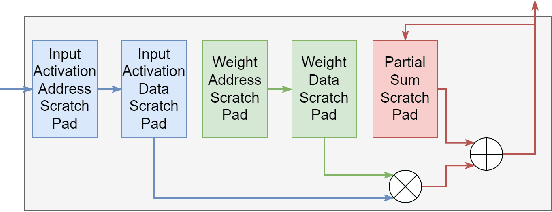
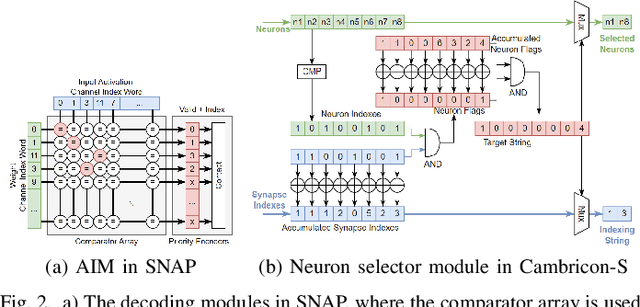
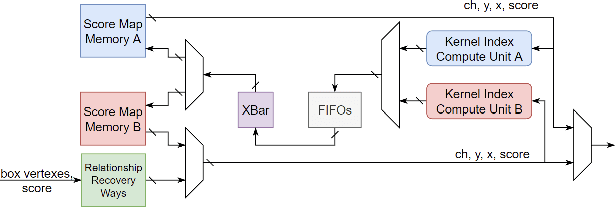
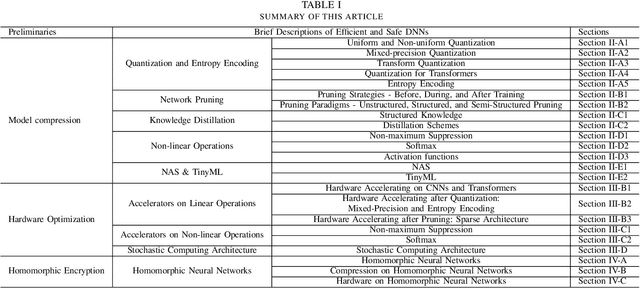
Abstract:Deep neural networks (DNNs) have been widely used in many artificial intelligence (AI) tasks. However, deploying them brings significant challenges due to the huge cost of memory, energy, and computation. To address these challenges, researchers have developed various model compression techniques such as model quantization and model pruning. Recently, there has been a surge in research of compression methods to achieve model efficiency while retaining the performance. Furthermore, more and more works focus on customizing the DNN hardware accelerators to better leverage the model compression techniques. In addition to efficiency, preserving security and privacy is critical for deploying DNNs. However, the vast and diverse body of related works can be overwhelming. This inspires us to conduct a comprehensive survey on recent research toward the goal of high-performance, cost-efficient, and safe deployment of DNNs. Our survey first covers the mainstream model compression techniques such as model quantization, model pruning, knowledge distillation, and optimizations of non-linear operations. We then introduce recent advances in designing hardware accelerators that can adapt to efficient model compression approaches. Additionally, we discuss how homomorphic encryption can be integrated to secure DNN deployment. Finally, we discuss several issues, such as hardware evaluation, generalization, and integration of various compression approaches. Overall, we aim to provide a big picture of efficient DNNs, from algorithm to hardware accelerators and security perspectives.
RAGCache: Efficient Knowledge Caching for Retrieval-Augmented Generation
Apr 18, 2024Abstract:Retrieval-Augmented Generation (RAG) has shown significant improvements in various natural language processing tasks by integrating the strengths of large language models (LLMs) and external knowledge databases. However, RAG introduces long sequence generation and leads to high computation and memory costs. We propose Thoth, a novel multilevel dynamic caching system tailored for RAG. Our analysis benchmarks current RAG systems, pinpointing the performance bottleneck (i.e., long sequence due to knowledge injection) and optimization opportunities (i.e., caching knowledge's intermediate states). Based on these insights, we design Thoth, which organizes the intermediate states of retrieved knowledge in a knowledge tree and caches them in the GPU and host memory hierarchy. Thoth proposes a replacement policy that is aware of LLM inference characteristics and RAG retrieval patterns. It also dynamically overlaps the retrieval and inference steps to minimize the end-to-end latency. We implement Thoth and evaluate it on vLLM, a state-of-the-art LLM inference system and Faiss, a state-of-the-art vector database. The experimental results show that Thoth reduces the time to first token (TTFT) by up to 4x and improves the throughput by up to 2.1x compared to vLLM integrated with Faiss.
Portrait Diffusion: Training-free Face Stylization with Chain-of-Painting
Dec 03, 2023Abstract:Face stylization refers to the transformation of a face into a specific portrait style. However, current methods require the use of example-based adaptation approaches to fine-tune pre-trained generative models so that they demand lots of time and storage space and fail to achieve detailed style transformation. This paper proposes a training-free face stylization framework, named Portrait Diffusion. This framework leverages off-the-shelf text-to-image diffusion models, eliminating the need for fine-tuning specific examples. Specifically, the content and style images are first inverted into latent codes. Then, during image reconstruction using the corresponding latent code, the content and style features in the attention space are delicately blended through a modified self-attention operation called Style Attention Control. Additionally, a Chain-of-Painting method is proposed for the gradual redrawing of unsatisfactory areas from rough adjustments to fine-tuning. Extensive experiments validate the effectiveness of our Portrait Diffusion method and demonstrate the superiority of Chain-of-Painting in achieving precise face stylization. Code will be released at \url{https://github.com/liujin112/PortraitDiffusion}.
Punctate White Matter Lesion Segmentation in Preterm Infants Powered by Counterfactually Generative Learning
Sep 07, 2023Abstract:Accurate segmentation of punctate white matter lesions (PWMLs) are fundamental for the timely diagnosis and treatment of related developmental disorders. Automated PWMLs segmentation from infant brain MR images is challenging, considering that the lesions are typically small and low-contrast, and the number of lesions may dramatically change across subjects. Existing learning-based methods directly apply general network architectures to this challenging task, which may fail to capture detailed positional information of PWMLs, potentially leading to severe under-segmentations. In this paper, we propose to leverage the idea of counterfactual reasoning coupled with the auxiliary task of brain tissue segmentation to learn fine-grained positional and morphological representations of PWMLs for accurate localization and segmentation. A simple and easy-to-implement deep-learning framework (i.e., DeepPWML) is accordingly designed. It combines the lesion counterfactual map with the tissue probability map to train a lightweight PWML segmentation network, demonstrating state-of-the-art performance on a real-clinical dataset of infant T1w MR images. The code is available at \href{https://github.com/ladderlab-xjtu/DeepPWML}{https://github.com/ladderlab-xjtu/DeepPWML}.
Trend-Based SAC Beam Control Method with Zero-Shot in Superconducting Linear Accelerator
May 25, 2023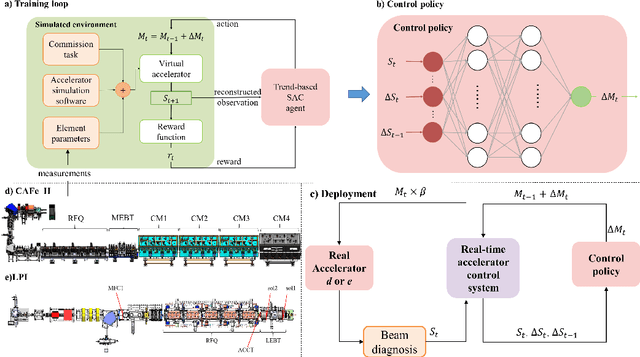

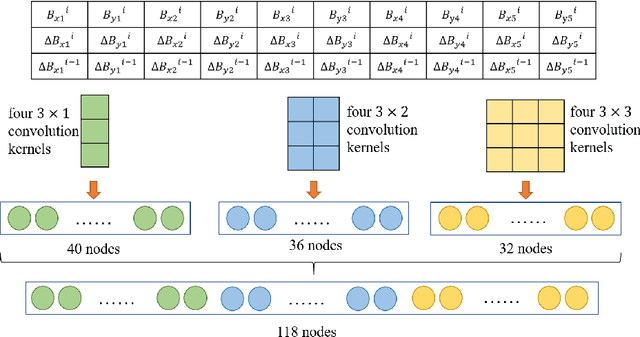
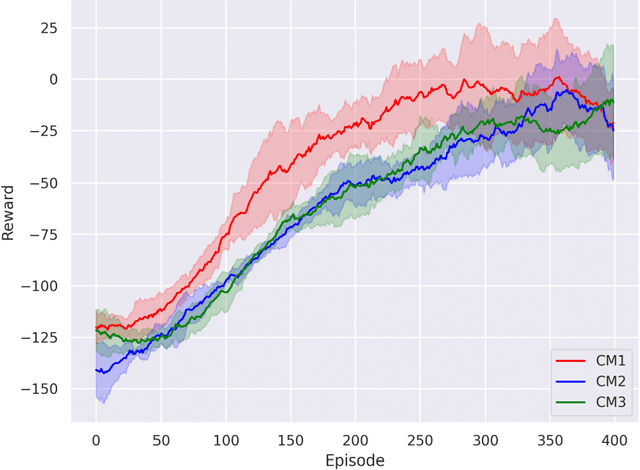
Abstract:The superconducting linear accelerator is a highly flexiable facility for modern scientific discoveries, necessitating weekly reconfiguration and tuning. Accordingly, minimizing setup time proves essential in affording users with ample experimental time. We propose a trend-based soft actor-critic(TBSAC) beam control method with strong robustness, allowing the agents to be trained in a simulated environment and applied to the real accelerator directly with zero-shot. To validate the effectiveness of our method, two different typical beam control tasks were performed on China Accelerator Facility for Superheavy Elements (CAFe II) and a light particle injector(LPI) respectively. The orbit correction tasks were performed in three cryomodules in CAFe II seperately, the time required for tuning has been reduced to one-tenth of that needed by human experts, and the RMS values of the corrected orbit were all less than 1mm. The other transmission efficiency optimization task was conducted in the LPI, our agent successfully optimized the transmission efficiency of radio-frequency quadrupole(RFQ) to over $85\%$ within 2 minutes. The outcomes of these two experiments offer substantiation that our proposed TBSAC approach can efficiently and effectively accomplish beam commissioning tasks while upholding the same standard as skilled human experts. As such, our method exhibits potential for future applications in other accelerator commissioning fields.
LSTMSPLIT: Effective SPLIT Learning based LSTM on Sequential Time-Series Data
Mar 08, 2022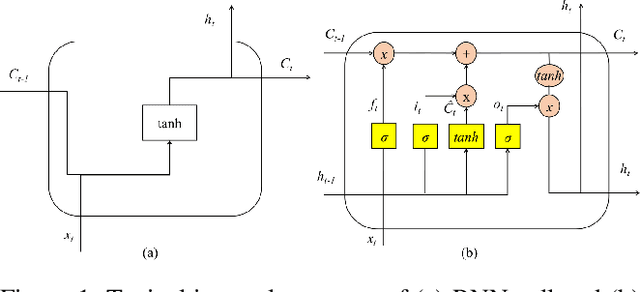
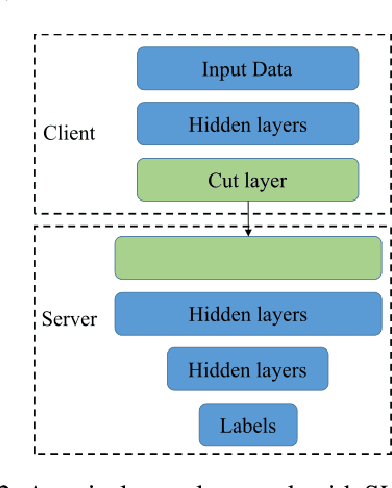

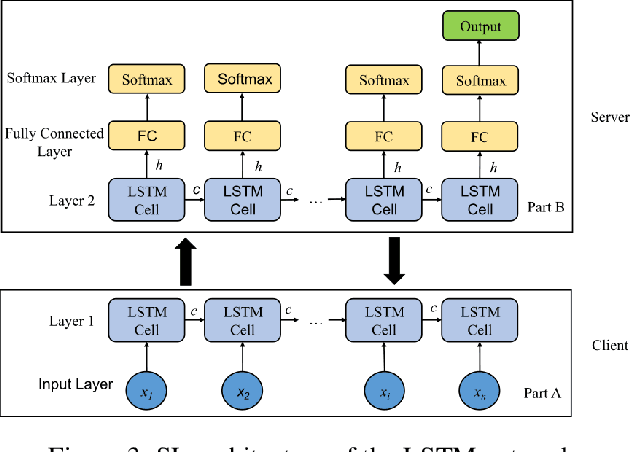
Abstract:Federated learning (FL) and split learning (SL) are the two popular distributed machine learning (ML) approaches that provide some data privacy protection mechanisms. In the time-series classification problem, many researchers typically use 1D convolutional neural networks (1DCNNs) based on the SL approach with a single client to reduce the computational overhead at the client-side while still preserving data privacy. Another method, recurrent neural network (RNN), is utilized on sequentially partitioned data where segments of multiple-segment sequential data are distributed across various clients. However, to the best of our knowledge, it is still not much work done in SL with long short-term memory (LSTM) network, even the LSTM network is practically effective in processing time-series data. In this work, we propose a new approach, LSTMSPLIT, that uses SL architecture with an LSTM network to classify time-series data with multiple clients. The differential privacy (DP) is applied to solve the data privacy leakage. The proposed method, LSTMSPLIT, has achieved better or reasonable accuracy compared to the Split-1DCNN method using the electrocardiogram dataset and the human activity recognition dataset. Furthermore, the proposed method, LSTMSPLIT, can also achieve good accuracy after applying differential privacy to preserve the user privacy of the cut layer of the LSTMSPLIT.
 Add to Chrome
Add to Chrome Add to Firefox
Add to Firefox Add to Edge
Add to Edge